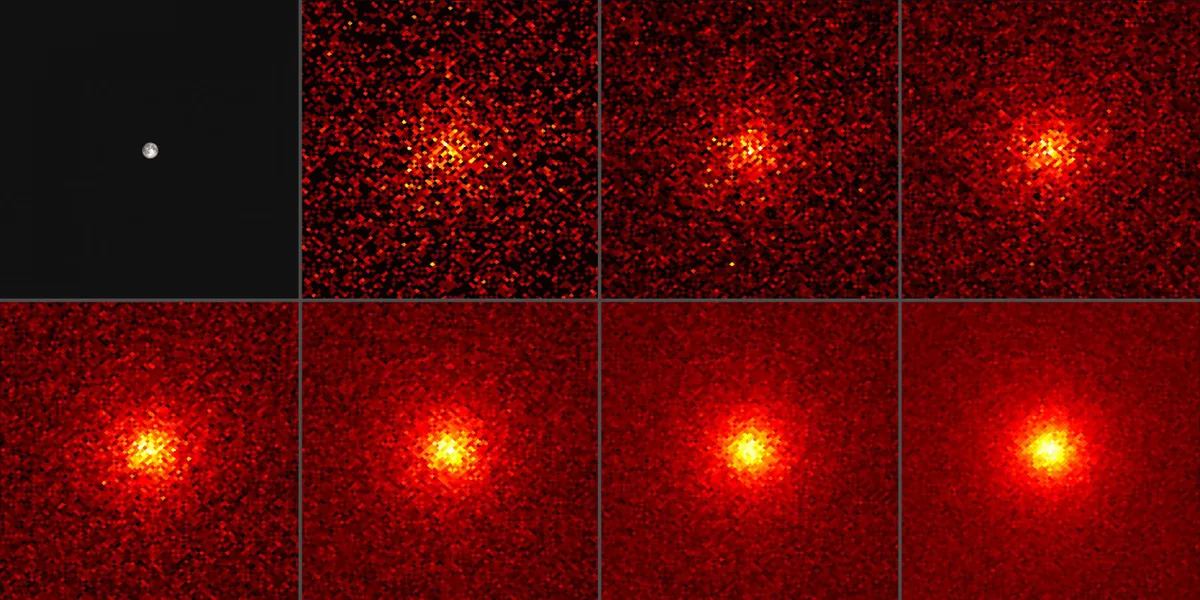The object in these images may look like a bright star, but it is in fact our Moon, as seen by the Fermi Gamma-ray Space Telescope.
The Fermi science team have been observing our planet’s satellite to study cosmic rays: charged particles generated by violent phenomena such as exploding stars.

While the top left image shows the scale of the Moon in optical light, the following sequence of images show how cosmic rays hit the lunar surface to produce a gamma ray glow, seen in exposures ranging from 2 months (second from top left) to 128 months (bottom right).
At these energies, our Moon is brighter than the Sun.
However, these gamma-ray observations can't pick up the shape of the Moon or surface features.
Instead, it appears as a huge glow around the Moon's position in the sky.
The Moon in gamma rays
Why study the Moon in gamma rays?
Scientists say observations like this help them learn more about cosmic rays, which are electrically charged particles accelerated by energetic phenomena across the Universe.
These particles are normally hindered by magnetic fields, but because the Moon doesn't have a magnetic field, cosmic rays have no trouble hitting its surface.
These cosmic rays hit dust on the surface of the Moon and cause gamma-ray emission.
Seen at these energies, the Moon would never go through its monthly cycle of phases and would always look full.
Credit:NASA/DOE/Fermi LAT Collaboration

